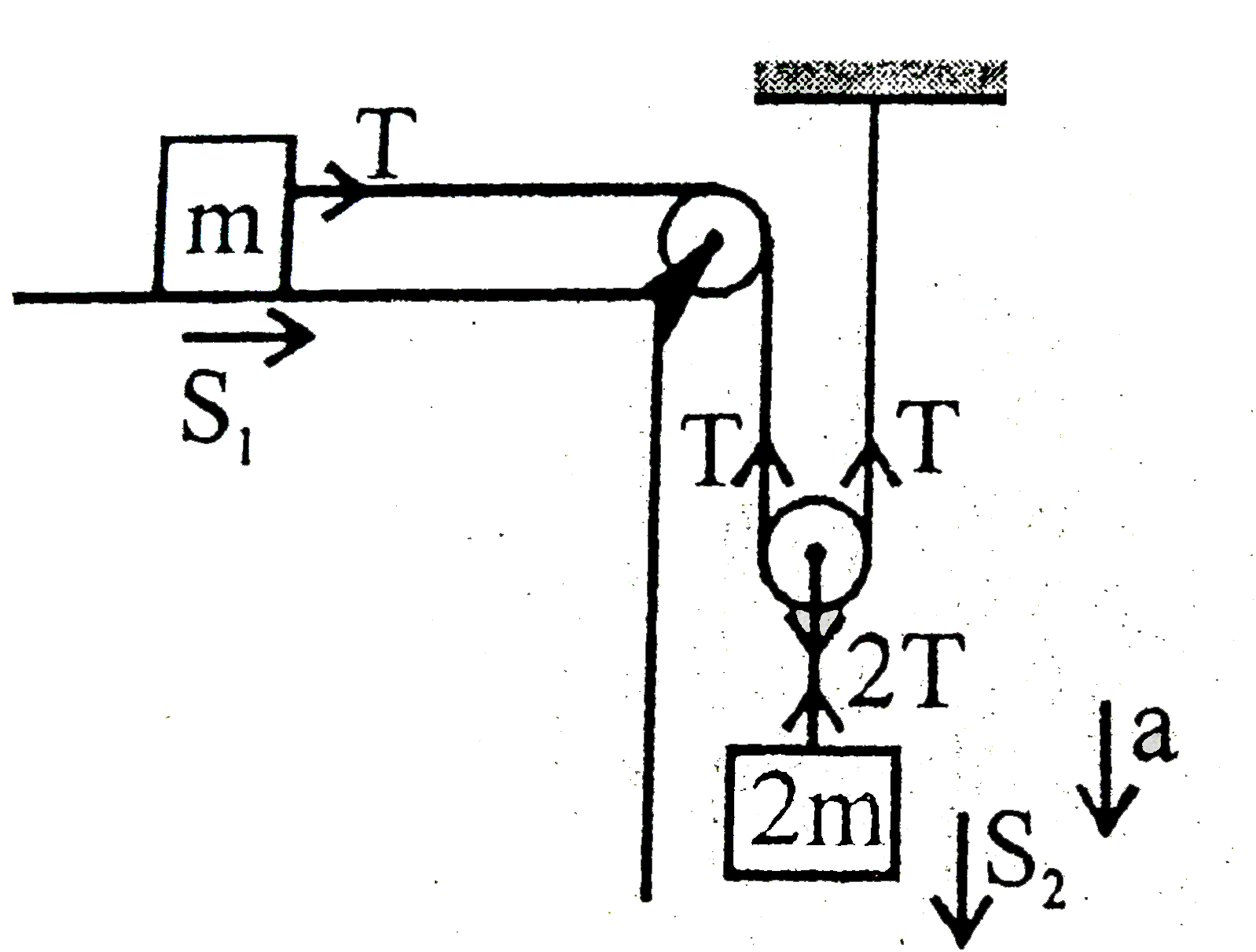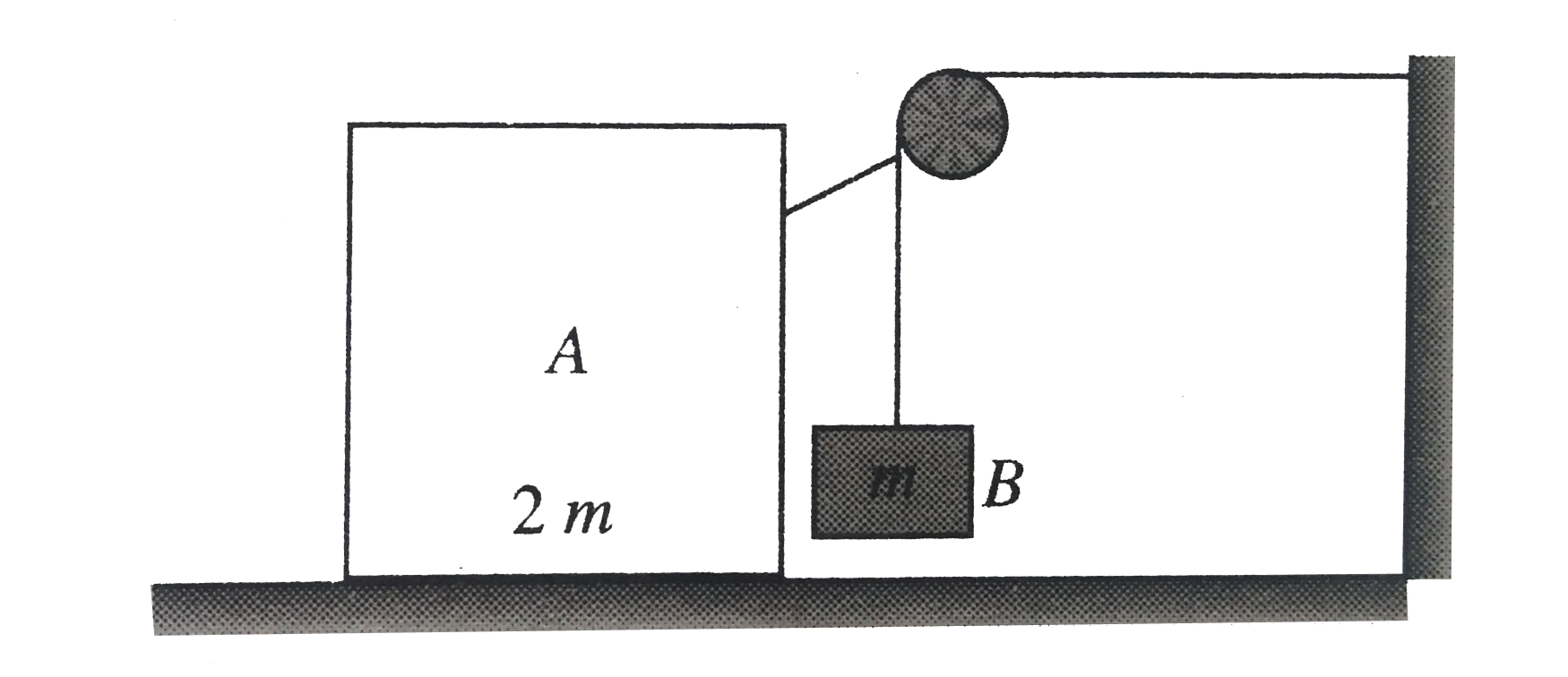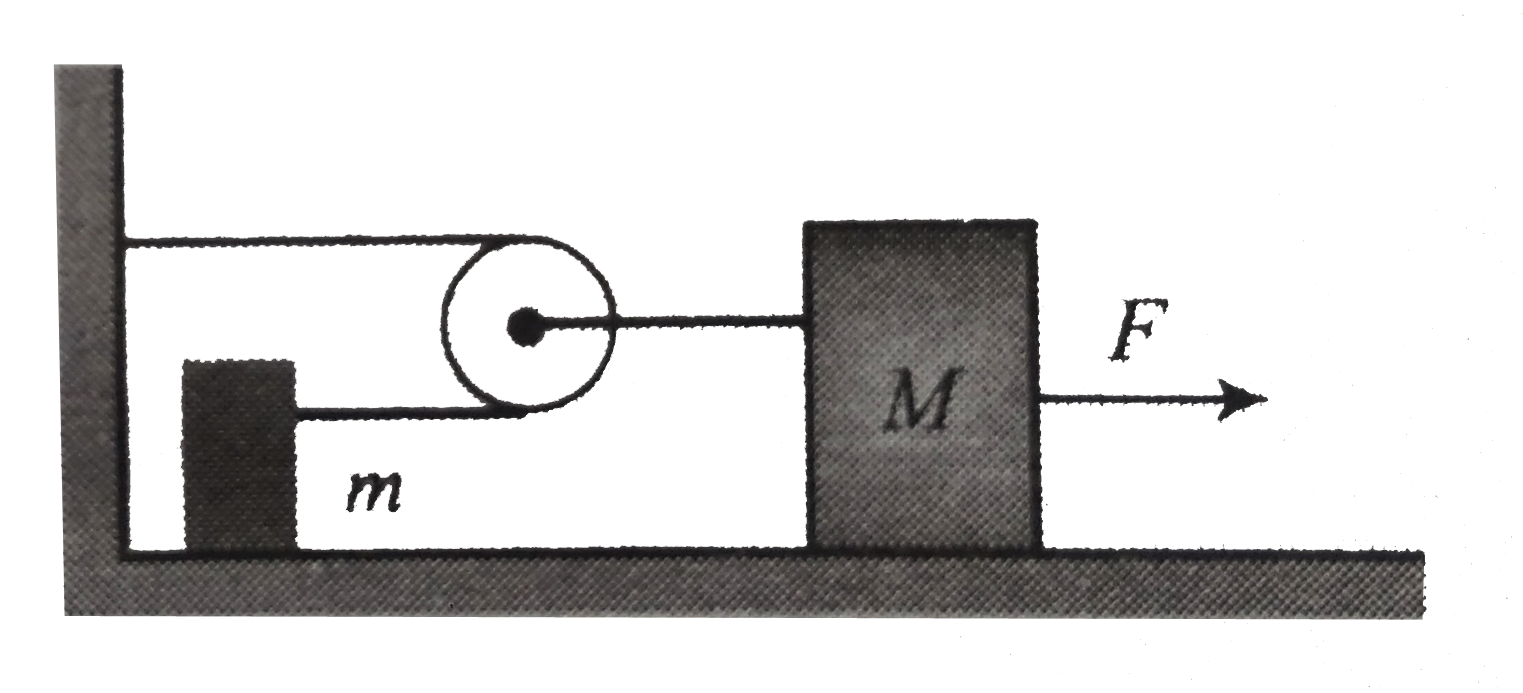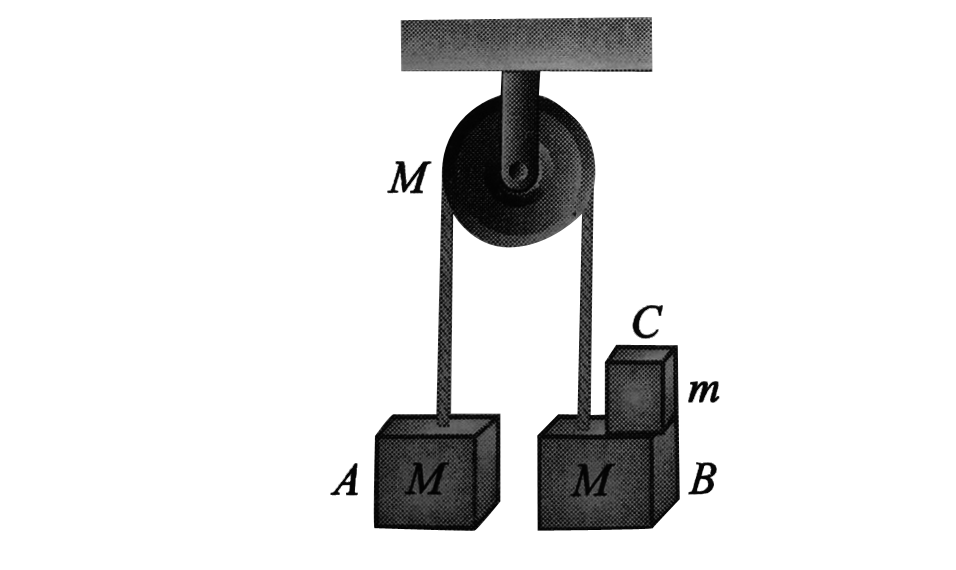
Assuming a frictionless, massless pulley, determine the acceleration of the blocks once they are released from rest.
mM+mg
MM+mg
Mmg
M−mM+mg
The correct Answer is:D
One way to attrack this question is to notice that if the two masses happen to be equal, that is, if M= m, then the blocks won't accelerate (because their weights balance). The only expression given that becomes zero when M= m is the one given in (d). If we draw a free - body diagram,

Newton's Second Law gives us the following two equations :
FT−mg=ma(1)
Mg−FT=Ma(2)
Adding these equations yields Mg- mg = ma+ Ma= (M+m) a, so
a=Mg−mgM+m=M−mM+mg
Topper's Solved these Questions
Similar Questions
Knowledge Check
- Question 1 - Select One
What is the acceleration of block A when the system is released from rest ?
 Ag/2 downwardsBg/3 downwardsCg/3 upwardsDg/2 upwards.
Ag/2 downwardsBg/3 downwardsCg/3 upwardsDg/2 upwards. - Question 2 - Select One
Find the acceleration of the block of mass m. Assume pulleys are massless and frictionless.
 Ag/3B2g3Cg2DNone
Ag/3B2g3Cg2DNone - Question 3 - Select One
In the system shown all the surfaces are frictionless while pulley and string are massless. The mass of block A is 2m and that of block B is m. The acceleration of block B immediately after system is released from rest is
 Ag/2BgCg/3DNone of these
Ag/2BgCg/3DNone of these
Find the acceleration of blocks in fig. The pulley and the string are massless.
 View Solution
View SolutionIn the system shown all the surfaces are frictionless while pulley and string are massless. The mass of block A is 2m and that of block B is m. The acceleration of block B immediately after system is released from rest is
 View Solution
View Solution
For the following system shown assume that pulley is frictionless, string is massless (m remains on M),
Q. The acceleration of the block A isView Solution
For the following system shown assume that pulley is frictionless, string is massless (m remains on M),
Q. The acceleration of the block A isView Solution
For the following system shown assume that pulley is frictionless, string is massless (m remains on M),
Q. The acceleration of the block A isView Solution

